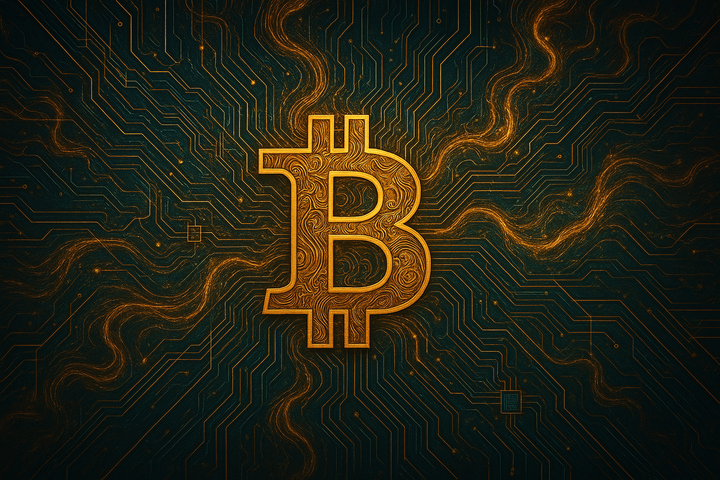Fiscal Turbulence and Digital Transition
On April 12, 2025, the What Bitcoin Did interview with Lawrence Lepard dissected historical bubble dynamics, tariff-induced market shocks, and mounting fiscal pressures undermining the fiat system and enhancing Bitcoin’s appeal as a digital safe haven.

- My 'briefing notes' summarize the content of podcast episodes; they do not reflect my own views.
- They contain (1) a summary of podcast content, (2) potential information gaps, and (3) some speculative views on wider Bitcoin implications.
- Pay attention to broadcast dates (I often summarize older episodes)
- Some episodes I summarize may be sponsored: don't trust, verify, if the information you are looking for is to be used for decision-making.
Summary
On April 12, 2025, the What Bitcoin Did interview with Lawrence Lepard dissected historical bubble dynamics, tariff-induced market shocks, and mounting fiscal pressures undermining the fiat system. Lepard illustrated how these challenges enhance Bitcoin’s appeal as a digital safe haven and a cornerstone for a future sound money framework. His insights underscore an urgent need for systemic monetary reform.
Take-Home Messages
- Fiscal Imbalances: Explosive debt growth and unsustainable fiscal policies signal a looming sovereign crisis.
- Market Volatility: Historical precedents of sudden bubble deflation highlight the risk of abrupt market corrections.
- Policy Disruption: Aggressive tariff measures and central bank interventions are creating significant market uncertainty.
- Digital Safe Haven: Bitcoin is emerging as a robust alternative in an environment marked by fiat debasement.
- Transition Imperative: Shifting to a sound money system centered on stable assets like Bitcoin, gold, and silver is critical for long-term economic resilience.
Overview
Larry Lepard begins by drawing parallels between historical bubble collapses and the current market environment, emphasizing that abrupt deflations can trigger severe disruptions. He attributes the potential for rapid market downturns to longstanding fiscal mismanagement and debt accumulation. His analysis sets a sober tone by linking past crises with present vulnerabilities.
He then examines the disruptive nature of recent tariff policies, outlining how these measures have unsettled both equity and bond markets. Lepard explains that the uncertainty over tariff calculations and aggressive policy shifts is eroding investor confidence.
Central bank actions and their limitations come under scrutiny as Lepard explores the interplay between quantitative tightening and the potential need for emergency quantitative easing. He contends that current monetary responses are inadequate in cushioning an economy burdened by fiscal and debt pressures.
Lepard positions Bitcoin alongside traditional assets like gold as a digital safe haven capable of preserving value during periods of fiat debasement. He advocates for a transition to a sound money system as a remedy for unsustainable fiscal policies and monetary practices..
Stakeholder Perspectives
- Investors: Face increasing uncertainty and seek assets that preserve value during market turbulence.
- Policymakers: Must balance immediate economic stabilization with long-term fiscal reform amid disruptive policies.
- Central Banks: Are pressured to recalibrate monetary policies to contain volatility without deepening fiscal deficits.
- Financial Institutions: Navigate evolving market dynamics while reassessing asset management strategies in a shifting monetary landscape.
- General Public: Concerned about the erosion of purchasing power and economic security, prompting interest in alternative safe haven assets.
Implications and Future Outlook
The episode implies that if current fiscal imbalances persist, a tipping point could force a rapid reorientation away from fiat currency. Policymakers and market participants may need to brace for abrupt economic shifts, with severe corrections in both stock and bond markets. In this environment, the role of alternative assets like Bitcoin and gold will become increasingly pronounced.
Lepard’s insights suggest that as uncertainty mounts, Bitcoin’s stature as a digital safe haven could consolidate further. Its ability to offer protection against currency debasement may drive accelerated adoption among both retail and institutional investors. This trend, however, depends on the evolution of monetary policies and the resolution of fiscal stresses.
The discussion also highlights that central bank actions, if perceived as inadequate, could further undermine confidence in the fiat system. A proactive shift towards a sound money framework may thus become imperative to restore stability and foster long-term growth. Ultimately, the future outlook hinges on the interplay of fiscal discipline, policy innovation, and market adaptation.
Some Key Information Gaps
- What are the primary indicators signaling that we are entering a sovereign debt crisis? This question is critical because it addresses the fundamental risk underlying current fiscal imbalances and debt accumulation. Understanding these indicators is essential for policymakers to anticipate shifts away from fiat currency and inform strategic planning for alternative asset adoption.
- How might a sovereign debt crisis accelerate the shift away from fiat currency toward alternative assets like Bitcoin? This inquiry is important as it examines the potential for systemic crises to reshape investment behaviors and asset allocation. Answering it can provide insights into how and when decision-makers should pivot toward digital safe havens.
- What are the critical challenges in transitioning from fiat to a sound money system based on assets like Bitcoin, gold, and silver? This question targets the practical hurdles and systemic reforms needed to adopt a sound money framework. Its answer is key for ensuring that any transition minimizes disruption while enhancing economic stability and investor confidence.
- How do current tariff policies influence market confidence and economic stability? This question is significant because tariff measures directly affect both domestic markets and international trade dynamics. Addressing it can help clarify the impact of geopolitical and policy-driven disruptions on overall financial stability.
- How effective have current Federal Reserve policies been in addressing market turbulence caused by quantitative easing and rate adjustments? This inquiry is crucial as it evaluates the central bank’s role in mitigating market instability during economic shocks. Its resolution could offer guidance for refining monetary policy to better support long-term economic resilience.
Broader Implications for Bitcoin
Global Reserve Reorientation
As fiscal stress and unchecked debt accumulation challenge the viability of the fiat system, institutional investors and nation-states may be compelled to reconsider their reserve asset allocations. This reorientation could see a gradual but important shift from traditional fiat-based reserves to diversified holdings that include digital assets like Bitcoin. The transformation may redefine global financial architecture and alter established monetary hierarchies.
Financial Infrastructure Innovation
The accelerating adoption of Bitcoin as a digital safe haven is likely to spur significant enhancements in financial technology and infrastructure. Innovations in secure, scalable, and efficient transaction systems could emerge as financial institutions pivot from conventional banking models. This evolution may lead to a broader ecosystem that supports a dual-currency paradigm, integrating both digital and traditional assets seamlessly.
Socioeconomic Redistribution Dynamics
The transition to a sound money model based on stable assets like Bitcoin could precipitate wider socioeconomic changes. Shifts in asset valuations might influence wealth distribution, as individuals and institutions reassess the value of traditional holdings against digital alternatives. This rebalancing could have far-reaching effects on social policy, investment strategies, and economic inclusion on a global scale.



Comments ()